What next on Sitric Road? Art and Livability – leave your tag below
Posted by desireland on Thursday, May 16, 2013 · 14 Comments
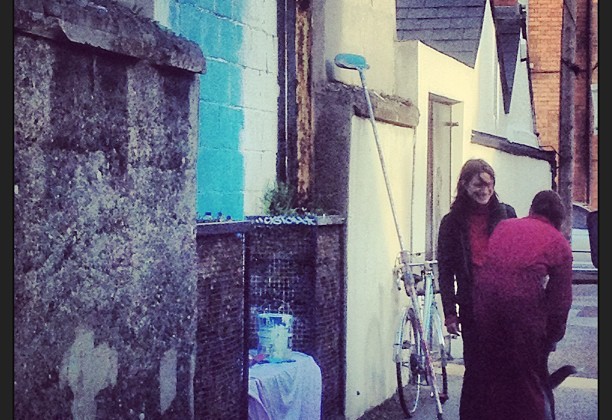
A few months ago Dublin City Council (DCC) removed quotes painted by local publishing house Lilliput Press from a wall located at the southern end our street, Sitric Road in Dublin 7, due to local complaints. At the time DCC informed us that the majority of the community would need to be behind the installation of any artwork on that particular wall, because they consider it public space, and that a proposal would need to be submitted to, and approved by DCC.
More recently the MURO Street Art Event, A DIT student project exploring the viability of Urban Art in Dublin, invited an artist to paint a mural on the same spot…but the issue around permission was confused and the project was discontinued. Other venues for the MURO Street Art were walls donated by owners of business premises, an example being the comical intercultural exchange on the wall of the Cobblestone pub at the head of Smithfield.
The student at the helm of MURO, Anna Tosatto, asks an important question in her description of the project: “Dublin is renowned as an extremely vibrant and cultural city but street art seems not to be enough fostered as in other cities…Street art not only aesthetically enhance(s) otherwise uninteresting buildings but also creates interest in art on a wider scale and enriches the culture and value of a place.”
Since it’s inception in 2005 the Sitric Compost Garden Community has always been interested in “enriching the culture and value” and improving the livability of this particularly anti-social space at the foot of Sitric Road. In 2007 (after several cars had been burned out at this location) we painted a particularly ugly section of the wall white. In the evening of the Sitric Picnic, our summer street party, we projected Jacque Tati’s ‘Jour De Fete’ and images of murals from the Mission District in San Francisco to help people imagine how an outdoor cinema or artwork could enhance our experience on the street. A slideshow of these Mission Mural images taken by Kaethe Burt-O’Dea is still available on Flickr.
The ‘Mission’ hosts an extraordinarily diverse collection of community mural projects organized by neighbours who voluntarily work together to raise awareness around social issues in that city. The projects have supported marginalized artists, many of whom are women, to express themselves in a medium that had been previously dominated by men. Members of the community sponsor the project by donating their wall space. Ownership and protection of these murals by the communities is so strong that some of those still standing date from as far back as the 1960’s.
“…collaboration reflects the very heart of Precita Eyes’ concerns and interest in art and how it interacts with/within the community around it. As a community-based mural organization, we believe that it is our mission to not only enhance the urban environment, but also to reach out to educate the community at large. We seek to do this by bringing art into the everyday lives of neighborhoods and communities in a way which is meaningful to them. We share a deep commitment to making artworks accessible, both physically and conceptually, to viewers from diverse backgrounds who may not be regularly exposed to the arts.” Precita Eyes Mural Project
Some believe the projects have been a victim of their own success and suggest that the artwork has attracted an influx of new residents and gentrification of the Mission, making it difficult for the original residents to continue to live in this formerly run down area of San Francisco. Certainly the Mission Mural projects illustrate how small urban interventions can trigger substantial change in a city which will play out in unexpected ways over time. The most admirable aspect of the projects is their emphasis on social inclusion, education and the rights of the marginalized.
In 2007 the idea of wall art on Sitric Road attracted some negative feedback from a few people who considered it graffiti so we held off pursuing our proposal to engage local kids in a community mural project. We then diverted our effort to using our excess compost to develop herb beds and a bench on the street. Because seating is not allowed on sidewalks for safety reasons we negotiated with DCC and proposed inserting our bench into a 13″ x 13′ recess in the wall, so that it wouldn’t impinge on the footpath. DCC reconsidered the idea and approved the project.
This small intervention, referred to locally known as the BENCHMARK, went on to win the ‘Best Community Initiative Award’ for the project in the Dublin City Neighbourhoods Competition in 2009.
It is quite obvious that the bench has greatly improved the usability of that space.Nevertheless, there are still a handfull of people in the area who would like to see the bench removed, claiming that it attracts the very thing we know it has diminished, anti-social behavior.For this reason DCC and the Garda keep an eye on the site. They are convinced that the bench is having a positive impact in the community. Their ongoing support illustrates that there are ways around obstacles if you are creative, can listen and are willing to negotiate. We continue to build on what we have learned from this small but significant intervention.
To take a closer look at the issues effecting people’s experience on our street we submitted an application, ‘PARK HERE!’ to the DCC Local Agenda 21 Fund in 2009. The research proposal is still available for funding if anyone is interested: SCGC-PocketPark-Agenda21-09-text-02.
This proposed a community based research project that would collect, explore, prototype and assess the community’s response to ideas for improving the area generated by the community itself (explaining why ‘Designing Dublin’ and DCC BETA feel a bit like ‘de ja vu’ to us). Our application was unsuccessful (we believe, although we never got notification of this?), but Dublin City Architecture Department got interested in our ideas and came to visit. DCC subsequently decided to employ two artist/architecture students, Culturstruction, to run a summer project with local children which would take them on tours of parks around the city and invite them to verbally communicate their thoughts on playground design. I have the CD recording of their comments, some of which were very profound: One child said he had been playing in playgrounds for 8 years and, frankly, he was tired of swings and slides. Another said he felt playgrounds should be designed for people of every age, teenagers and elderly for example, not just children…
The children’s comments were then interpreted by the DCC Maintenance Department and the result, a playground/park called Lilliput, was built on Sitric Road for Dublin Innovation Week 2009, We were asked by DCC to co-ordinate our autumn street party, the SITRIC MEITHEAL, with the 48 hour long exhibition of the project on our street.
In retrospect this was a bad idea. Publicity for the project brought a glut of visitors who quickly consumed all the wonderful food the residents of our community traditionally bring to share. DCC failed to provide signage containing information explaining the Lilliput Project to the neighbourhood and their occupation of the street was instantly confused with our local PARK HERE proposal. This galvanized resentment amongst a few members of the community who believed we had no interest in their opinions and had simply bypassed consultation and built a permanent playground/park on the street. Although DCC promised a facilitated public meeting to explain things at the time, this never happened. The misunderstanding led to polarization amongst residents, media coverage of the event didn’t help, and the unresolved issues from that temporary experiment on Sitric Road still act as an impediment to our ability to work together as a community today.
Tenacity, patience and commitment are certainly characteristics you need to develop if you want to improve the urban environment for people. We struggle daily to retain the BENCHMARK for the community and deal with the recent increase in dumping (a citywide problem) on the herb beds, the street surrounding the bench and into our community garden & composting demontstration site opposite (despite polite messages asking for cooperation). But spontaneous gifts (time, skills, plants, shovels, flower pots, bricks for edging, etc.) far outweigh any thefts or destructive acts.
Engaging the neighbourhood in local issues and the improvement of the street for people (with special attention to the elderly and the many children who are growing up in our area) is our primary goal, and there is strength in numbers. We welcome any support in our ambition! A local street art project could be part of this process, but, as is true in any community (and key to the success of the Mission murals), it is crucial to remain sensitive to the local context, culture and history and work together.
From our experience, creating a project or routine activity on your street is a far more effective way to meet your neighbours and foster proactive research into neighbourhood livability issues than meetings. In our community helping out with the SITRIC PICNIC, our annual street party traditionally held at the end of June, is a great way to begin. The time is nigh! If you live in the Sitric area and would like to get involved in please join the organizing group on Facebook or get in touch via the contact form on this site!
By the way, I wonder if anyone else remembers the impressive workshop/exhibition of international urban street art that was held in Smithfield prior to it’s redevelopment years ago? International artists were invited to come to Dublin and put their stamp on the hoarding that surrounded the site…It was one of the most exciting exhibitions I have seen in this city.
QUESTION! If you were to commission an artist or where involved in a workshop to create a piece of art over the ‘Benchmark’ public garden seat at the foot of Sitric Road what would you like to see there? Leave your tag below!
Links to the Mission Murals in San Francisco:
http://www.precitaeyes.org/
http://www.balmyalley.com/Welcome.html
http://utpress.utexas.edu/index.php/books/latwal
http://www.meganwilson.com/related/clarion.php
Category: Desireland, Lifeline Project, The Sitric Garden · Tags: citizen scientists, community based research, community gardening, community spirit, composting, demonstration projects, green infrastructure, healthcare design, livability, skill share, social inclusion, social responsibility, street art, Street Parties
 Desireland
Desireland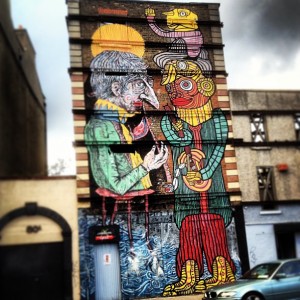
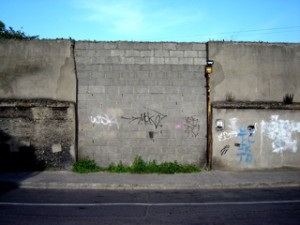

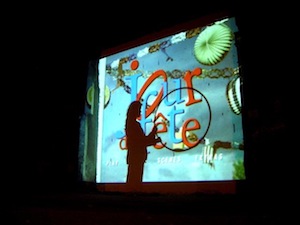
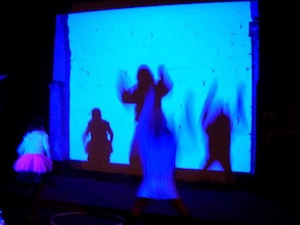

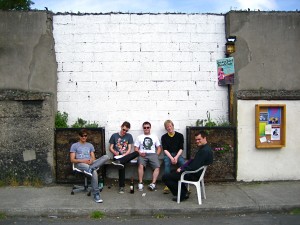
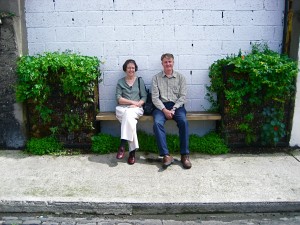
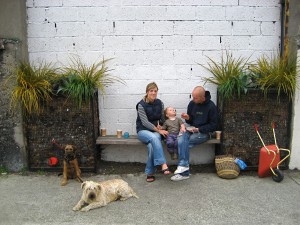
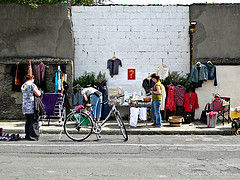
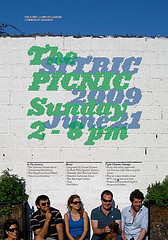
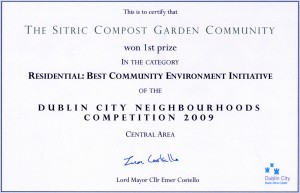

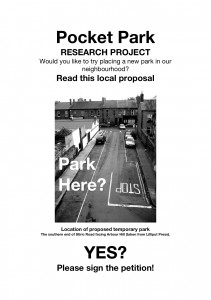
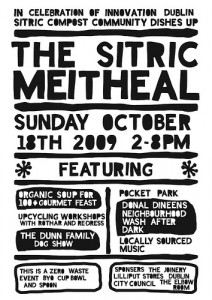

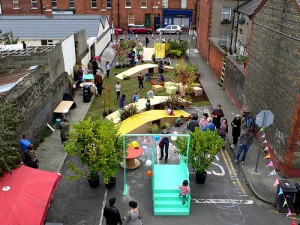

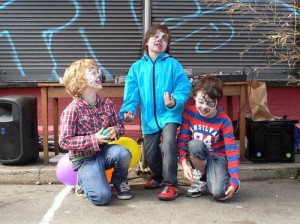
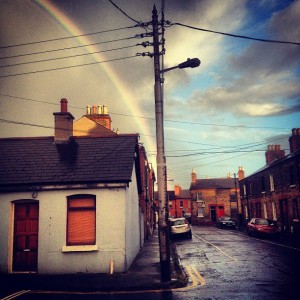

I walk past this every day. I’d love to see a woodland landscape. Ideally render the whole wall, one large woodland landscape scene with benches the length of the wall.
As a Sitric Road resident, and gardener…I pass the wall everyday too and love your idea. Actually that is something I have never understood, why put only only one bench in a park, as is the case in so many of the small LOCKED parks in our area?
In Central Park in NYC the put in extensive corridors of multiple benches which provide a resting place for a diverse mix of pedestrians: http://www.andykazie.com/Portfolio/Spring-to-Life-1/i-tktJksm/0/L/SpringSycamoreTrees-L.jpg
The Central Park ‘Conservatory’ who maintain the park is almost exclusively made up of volunteers and there is an ‘adapt a bench’ scheme to fund their installation and maintenance: http://www.centralparknyc.org/donate/honor-someone-special/adopt-a-bench.html
Encourage your neighbours to log in their ideas!
Sitric resident here too and would love to see something artistic go up on that space. I think people had problems with the quotes because it might have been perceived (at least to me) as being done to promote a book that had recently been published by the Press and weren’t designed to enhance the community. Three quotes was probably overkill in hindsight, one would have been fine though.
What Ruaidhrí suggests would be ideal I think, there will probably be some complaints from some residents but if they are in the significant minority I would say press ahead with it regardless
I know Ruaidhi’s comments are just notional but setting up a row of benches on the sidewalk would not be difficult, as I mentioned, the footpath needs to be kept clear for pedestrians. In Bryant Park NYC they have bought several hundred French Cafe Chairs which they distribute daily around the site providing a more adaptable and friendly seating arrangement. http://landscapeurbanism.com/wp-content/uploads/2012/02/03_Bryant-Chairs.jpg.
IKEA sell versions of these folding chairs and tables for 15 euro: http://www.ikea.com/us/en/catalog/products/90095428/. My neighbour Betty suggested the idea of individual residents sponsoring chairs which could be kept locally and brought out when the sun shines…but where would we find accessible storage?
how about a living wall? Instead of a picture of nature, have real nature!
Yes, that would certainly be fantastic! In fact, some of the older, more textured areas of the wall already are ‘alive’ http://www.flickr.com/photos/desireland/2540409965/in/set-72157605371792175 A group of us have been exploring this potential for some time. I have have a garden full of moss samples ready I have collected for a group MOSS GRAFFITI experiment at the SITRIC PICNIC: http://www.stencilrevolution.com/tutorials/how-to-make-moss-graffiti/
Ideally it would be brilliant if the living wall could feed off of the ‘grey’ water coming from the flat above Lilliput Press. Maintenance would be a key issue. I have been working with DIT product engineering students to design an aquaponics system for the Sitric Compost Garden which we hoped would be a step in that direction…In this regard, we are delighted to have the URBAN ROOFTOP FARM as our new neighbours and collaborators!http://www.urbanfarm.ie/
Keep up the great work. I really miss living in that street. I will be back when my wee wans have left home!!!!
Press on with some lovely art. Perhaps get the joinery to have an artist each month do something. Keep it fresh.
xxxx
Thanks Lisa! Actually, there are LOTS of wee ones on the street and in the area now! Families are sticking around due to the economic climate. All the more reason to refuel our enthusiasm for making the street safer and more livable…
Pingback: On the Batter
How’s about something to explain the history of the area – eg from a bit of research the land on which these houses are built was once an orchard according to the older maps, or something in reference to the cattle market that was once here, or something to do with the Vikings and King Sitric. Maybe a mural?
Forgive me for breaking into this discussion, but finding the street name was remarkable in that l once visited the road about 55 years ago. My late Mother Thresa O’ Reilly lived in Sitric Road, before getting married and moving to Malahind. I will be visiting Dublin in 2016 and will certainly be visiting the road, hope by that time l can get the house number.
Delighted to hear from you! I live on the road and will enquire to see if I can find out which house you and your mother lived in. Please get in touch when you come to visit in 2016. If you time it right you will be able to attend our annual local street party where we would love to hear your stories about life on Sitric Road 55 years ago! You might have known Mary Elizabeth who would have been in her 20s then I imagine?
Just seen your post, not sure if we are cousins? My Dad lived in Sitric Road, Sean O’Reilly & he had a sister called Thresa! I remember visiting the house many years ago but don’t know the house number, it was just across the road from a corner shop.
I am definitely not your cousin as I am a blow in from the USA living on Sitric Road, but you might like to put a message up on the Sitric Picnic Facebook Page, where we organise our annual street party to see if anyone responds to your enquiry: https://www.facebook.com/groups/sitricpicnic/?fref=ts